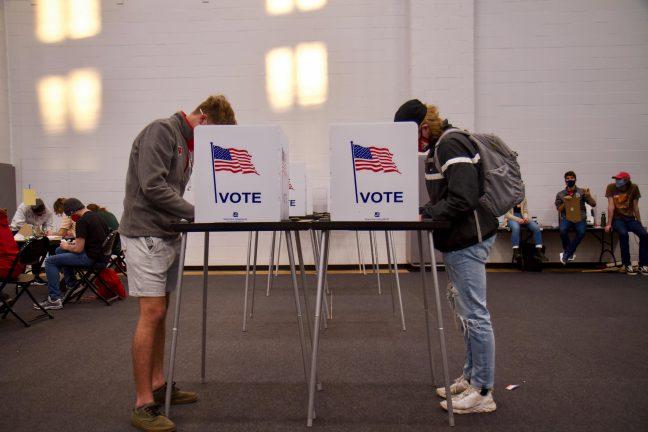This year’s state election results show Wisconsin’s districts are gerrymandered to favor republican legislators, according to an Wisconsin State Journal analysis of the election.
Last Tuesday’s election results show that Democratic candidates received 46% of total votes cast in state Assembly races and received 38 of 99, according to a Wisconsin State Journal analysis of unofficial vote totals in Wisconsin.
Democratic candidates secured roughly 47% of total votes in state Senate races, yet picked up 38% of the seats on the ballot and now control 12 of 33 seats, according to the Wisconsin State Journal.
These results are considered preliminary and The Associated Press has not called all state legislative races yet. This data does not include write-in votes, according to the Wisconsin State Journal
Professor of Political Science at the University of Wisconsin-Madison and Director of the Elections Research Center Barry Burden said the current Wisconsin districts were drawn in 2011 by a unified Republican government.
“They were extremely efficient in drawing maps that produced an extreme gerrymander,” Burden said. “I would say they went to town. It was very effective and has kept Republicans in the majority in the Assembly and the Senate for ten years.”
Burden said this pattern shifted the district realities in Wisconsin from previous trends of consistently divided government. The year 2011 was the first time a single party, Republicans, had control over the whole process of redistricting.
The Wisconsin electorate shifted from slightly favoring Republicans four years ago to slightly favoring Democrats this election, Burden said, but the legislature did not shift much in representation.
“Even in times when Democrats won elections big in the state, the Republican majority hardly wavered, and this year was no different,” Burden said.
Burden emphasized the mismatch between what voters are doing in state-wide elections and what materializes in the state legislature.
In the Isthmus area and student wards, voting tends to lean more Democratic, Burden said. All representatives from the Madison area are Democratic both in the Assembly and the Senate.
“Even when the rest of the state votes in a way that the campus area would prefer, they vote for Democrats, it doesn’t change the legislature,” Burden said. “So even though voters in the campus area may get the person or party they want to represent them, the legislature as a whole really never does represent their partisan preferences because the districts are drawn to prevent that from happening.”
Burden said that gerrymandering illuminates a fundamental problem where democracies and democratic systems can function without being responsive to their voters.
Governor Tony Evers created a commission to draw and propose nonpartisan maps to the Legislature next year. Republican leaders have signaled plans to reject those maps and draw their own, according to the Wisconsin State Journal.


